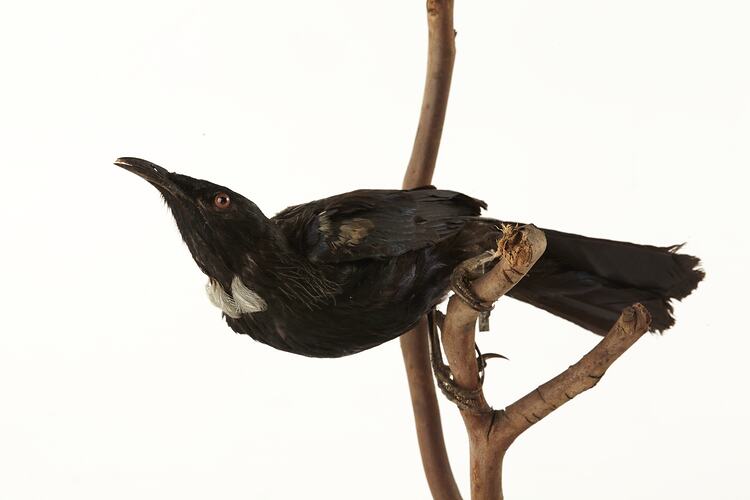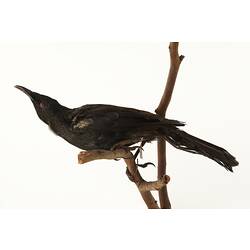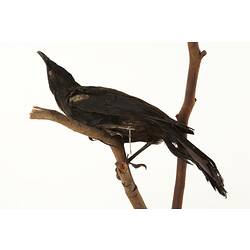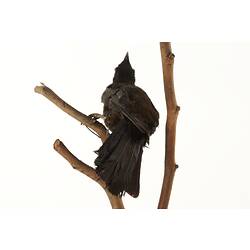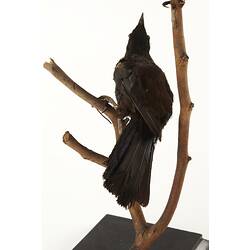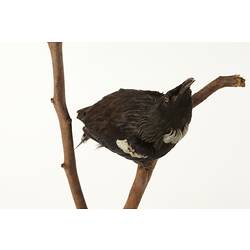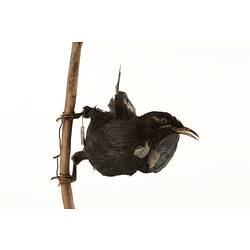Summary
Tui are a type of honeyeater endemic to New Zealand. The name Tui comes from the Maori name, tui. Early European colonists called it the Parson Bird because of its superficially black and white appearance that was thought to resemble clerical robes. They are actually more colourful than this name suggested, with brown feathers and a multi-coloured iridescence.
The distribution of the Tui is broad. They are found across much of New Zealand, the Chatham, Kermadec and Auckland Islands which makes it the most southerly of the honeyeater species. The exact location this specimen was collected from in New Zealand is unknown. It was donated to the Museum in 1869 by ornithologist Kendall Broadbent (1837-1911), taxidermist at Queensland Museum.
Though their population appears to be slowly declining, due to habitat destruction by lifestock and predation by introduced species, the Tui's wide range means they are not considered to be vulnerable. The International Union for Conservation of Nature (IUCN) considers them to be of Least Concern.
Specimen Details
-
Taxon Name
-
Preferred Common name
Tui
-
Specimen Nature
Nature: Mount, Form: Dry
-
Collected By
Unknown
-
Date Visited From
24/09/1898
-
Date Visited To
10/08/1898
-
Category
-
Scientific Group
-
Discipline
-
Collecting Areas
-
Type of Item
Taxonomy
-
Kingdom
-
Phylum
-
Subphylum
-
Class
-
Order
-
Family
-
Genus
-
Species Name
novaeseelandiae
-
Subspecies
novaeseelandiae
Geospatial Information
-
Country
-
Latitude
-41
-
Longitude
174
-
Geodetic Datum
WGS84
-
Georeference Source
Tissue Bank Database
